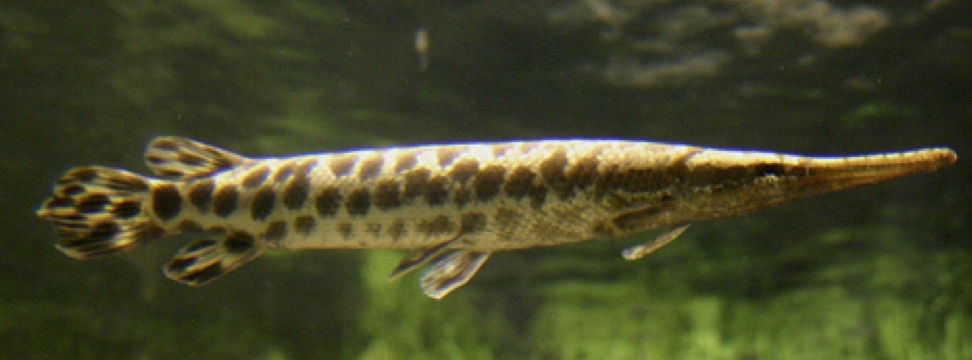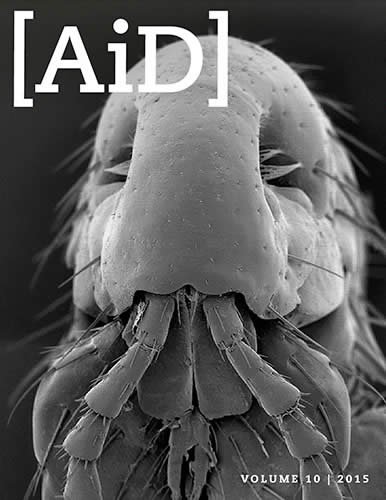
Does the Spotted Gar Harbor a Fish-Finger Connection?
News to Know
Abstract
Solution to the mystery of terrestrial toes said to reside in the spotted gar.
Evolutionary efforts to demonstrate how genetic information to produce wrists, ankles, fingers, and toes evolved from the genes that blueprint fish fins “have fallen short,” according to ScienceDaily. That admission came as preamble to the announcement that this failure has resulted from study of the wrong fish. The fish harboring the genetic switch to flip on fingers, presumably retained over the eons, is the spotted gar.
Researchers in the laboratory of Neil Shubin of Tiktaalik fame report in Proceedings of the National Academy of Sciences that, by shifting their sights to the spotted gar, they have discovered the incipient genetic information that eventually produced terrestrial mammalian “autopods.” Autopod is a convenient catch-all word for the bones that make up either wrists-and-fingers or ankles-and-toes. The spotted gar, these evolutionists believe, is more primitive than most bony ray-finned fish and therefore retains in its genome a genetic switch very similar to that used for autopod development in mammalian embryos.

This is the spotted gar, Lepisosteus oculatus. The genetic switches in this fish flip the switch for finger-and-foot development in mouse embryos better than those from zebrafish. Image by Brian Gratwicke, via Wikipedia Commons.
Fins without Fingers
Tiktaalik’s discoverer Neil Shubin has popularized the notion that Tiktaalik cinches the connection between terrestrial mammals and fish:
Fossils show that the wrist and digits clearly have an aquatic origin. But fins and limbs have different purposes. They have evolved in different directions since they diverged. We wanted to explore, and better understand, their connections by adding genetic and molecular data to what we already know from the fossil record.
Fish lack skeletal counterparts for wrists, ankles, and digits. They also lack legs, for that matter, and the sturdy bony connection of “limbs”-to-backbone needed to support their weight for a stroll across the land, making claims about transitional forms quite a stretch. But here we are looking at the other end of their fins, the end that doesn’t have fingers or feet.
Ray-finned fish, including the spotted gar, have only fragile dermal ray bones in their fins, not endochondral bones like tetrapods. The lobe-finned coelacanth has only one long endochondral bone in each of its fins. Some extinct lobe-finned fish such as Tiktaalik had more endochondral bones in their fins. The resulting increase in fin flexibility may have increased Tiktaalik’s maneuverability by enabling it to powerfully whip its fins or to heave its huge body upward from the bottom in shallow water. But those bones inside Tiktaalik’s lobed fins do not have any truly wrist-like bones or long thin bones like those in the hands, feet, and digits, just small rounded bones called “radials.”
Unlike fish, terrestrial vertebrate limbs follow a pattern of long bones, then nodular wrist or ankle bones, then more long thin bones——the metacarpals, metatarsals, and phalanges that form the skeletal hands and feet, fingers and toes. Fins are not feet, not even on the inside, as they don’t have the necessary “autopod” pattern of bones. Evolutionists, believing fish to be the ancestor of terrestrial vertebrates, are trying to see if they still have any of the same genes that they believe were used when terrestrial vertebrates evolved.
Are There Fingers in Them Thar1 Fish Genes?
Since, despite the popular hype, bones have been less than helpful in making the evolutionary case for fin-to-finger evolution, evolutionists like those in Shubin’s lab look for evidence of evolutionary transitions in the genomes of fish and terrestrial mammals. Fish of course have no hands. However, HOX genes, which help regulate the expression of genes that produce fins, limbs, and wings, are similar in many animals.
While these HOX genetic switches are not necessarily interchangeable, much research in recent years has involved finding different kinds of animals in which these switches can be swapped and still function. For example, as we reported in “Developments in Fish Said to Show How Limbs Evolved” a mouse HOX gene (HoxD13) that regulates limb development in embryonic mice can interfere with normal fin development and instead promote proliferation of cartilage in embryonic zebrafish. Conversely, this study from Shubin’s lab describes transplantation of fish HOX genes to trigger limb development in mice. Neither study involves getting fish to grow hands or mice to grow fins.
Switching the Switch from Which Fish?
Normally HoxD and HoxA genes promote formation of the upper (proximal) parts of mammalian limbs early in embryonic development. Later they are expressed again to promote formation of wrists, ankles, and digits—the more distal parts of the limbs. Since previous research has shown a transplanted mouse HOX gene to be active in zebrafish, shouldn’t fish switches work in mice? Well, it turns out that when HOX switches from fish like zebrafish are inserted into the genomes of embryonic mice, nothing happens. Nothing, that is, unless the switches are taken from the spotted gar.
So why did Shubin’s graduate student Andrew Gehrke, lead author of the PNAS study, decide to check out the spotted gar? Well, the genomes of many modern ray-finned fish contain an extra copy of the genetic material.2 The spotted gar does not.
With only one set of genes, evolutionists consider ray-finned fish like the spotted gar to be a primitive line that diverged from other ray-finned fish over 300 million years ago, leaving the other branch to duplicate its genome and diversify magnificently into the amazing variety of fish we see today. Shubin’s group suspected that the gar’s line, with fewer genetic variations open to it, may have retained greater similarity to our hypothetical very ancient common ancestor than fish like zebrafish.
With this model—the idea that spotted gars are from a more primitive line of fish than those whose genomes have previously been examined for the incipient footprints of terrestriality—Gehrke and colleagues tried out some genetic switches that trigger fin development in the spotted gar in mouse embryos. While genetic switches from zebrafish are ineffective in mice, the genetic switch sequence from the spotted gar switches on nearly normal distal limb—or “autopod”— development in the mice.
Based on the spotted gar data, Gehrke reports, the genetic regulatory networks have “an unprecedented and previously undescribed level of deep conservation of the vertebrate autopod regulatory apparatus.” This statement of course assumes that similar genetic sequences are evidence of common ancestry— “conservation”—and not just common design. Despite the fact that the spotted gar’s fins in no way resemble mammalian autopods, the researchers report this similarity of genetic regulatory mechanisms suggests an evolutionary relationship between the “distal radials of bony fish and the autopod of tetrapods.” Gehrke and Shubin conclude that the functionality of the spotted gar’s genetic switch in a mammal is a lingering residual of our common ancestry, a similarity lost in the highly diversified genomes of most modern fish.
Common Designs Scream Common Designer
The unverifiable evolutionary assumption here is the idea that the genetic regulatory mechanism shared by spotted gar fish and mice evolved very early, and that millions of years later the wrist/ankle/digit-making genes evolved for terrestrial animals and got switched on by the already-existing regulatory mechanisms. But is this cross-compatible genetic switch evidence of such an evolutionary connection? Not at all.
Homologies—anatomical, physiological, developmental, or genetic similarities—have long been advanced as a way to trace evolutionary lineage. Evolutionists assume that homologous designs in different kinds of organisms result from either common ancestry or the “convergent” evolution of the same good design more than once. But our common Designer—our wise Creator—used similar genes to accomplish somewhat similar functions in many different organisms. That similar regulatory genes are sometimes found in different kinds of organisms is observable but does not demonstrate common evolutionary ancestry.
Nothing in experimental biological science demonstrates how the genetic information to produce fins or legs or anything else could come into being through spontaneous natural processes.
God’s finely tuned intricate design for each kind of organism includes genes that regulate the expression of other genes. Both regulatory genes and the genes that contain the blueprints for each anatomical structure are examples of information. Information requires a source. Nothing in experimental biological science demonstrates how the genetic information to produce fins or legs or anything else could come into being through spontaneous natural processes. Common genes and common regulators of genetic expression come from a common Designer and in no way trace the path of fins-to-fingers evolution.
God—according to His own testimony in Genesis—created all kinds of fish on the 5th day of Creation Week and all kinds of land animals the very next day. God confirmed the fact that He completed this creative work in just six days when He wrote commandments on tablets of stone and gave them to Moses. Exodus 20:11 thus records, “For in six days the Lord made the heavens and the earth, the sea, and all that is in them, and rested the seventh day.” Millions of years to allow fish to evolve into walking terrestrial animals are not compatible with God’s eyewitness account of our origins.
Furthermore, biological observation reveals that animals reproduce and vary only within their created kinds as God designed them to do. Thus fish diversify, but they remain fish. In the genetics lab as in the fossil record, the evolutionary quest for a terrestrial transition still comes up empty.
Further Reading
- Fish out of Water Said to Rise, Lift up Their Heads, and Walk
- Fish Fins Are Not Fingers That Failed
- Did Humans Evolve from a Fish out of Water?
- Did Tiktaalik’s Pelvis Prepare Fish to Walk on Land?
- Developments in Fish Said to Show How Limbs Evolved
- Did Paired Fins Foreshadow Paired Limbs in Terrestrial Animals?
- Fish Still Considered a Transitional Form of Evolution
For More Information: Get Answers
Remember, if you see a news story that might merit some attention, let us know about it! (Note: if the story originates from the Associated Press, FOX News, MSNBC, the New York Times, or another major national media outlet, we will most likely have already heard about it.) And thanks to all of our readers who have submitted great news tips to us. If you didn’t catch all the latest News to Know, why not take a look to see what you’ve missed?
(Please note that links will take you directly to the source. Answers in Genesis is not responsible for content on the websites to which we refer. For more information, please see our Privacy Policy.)
Footnotes
- This American idiom—“them thar”—is recalled from sources such as the classic 1934 Laurel and Hardy comedy film Them Thar Hills and promotional materials entitled “Thar’s Gold in Them Thar Hills” related to gold mining in Georgia in the late 19th and early 20th centuries.
- This feature, by permitting many genetic variations to coexist, may have facilitated development of enormous biodiversity. Natural selection among such variations of fish genes cannot lead to different kinds of animals however, just more varieties of fish.
Recommended Resources

Answers in Genesis is an apologetics ministry, dedicated to helping Christians defend their faith and proclaim the good news of Jesus Christ.
- Customer Service 800.778.3390
- © 2024 Answers in Genesis



